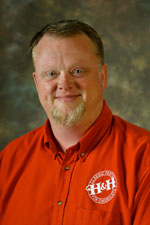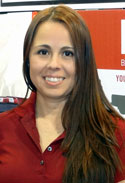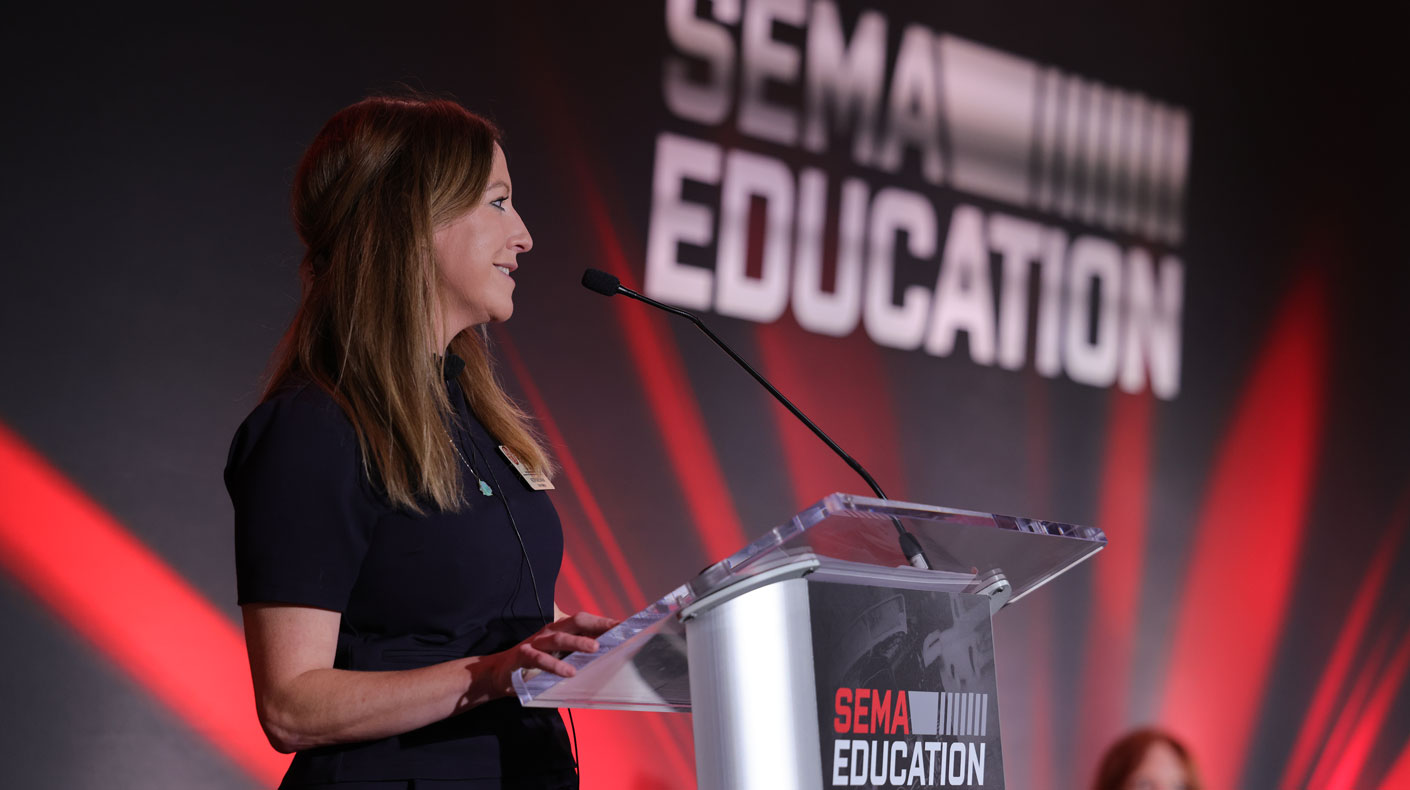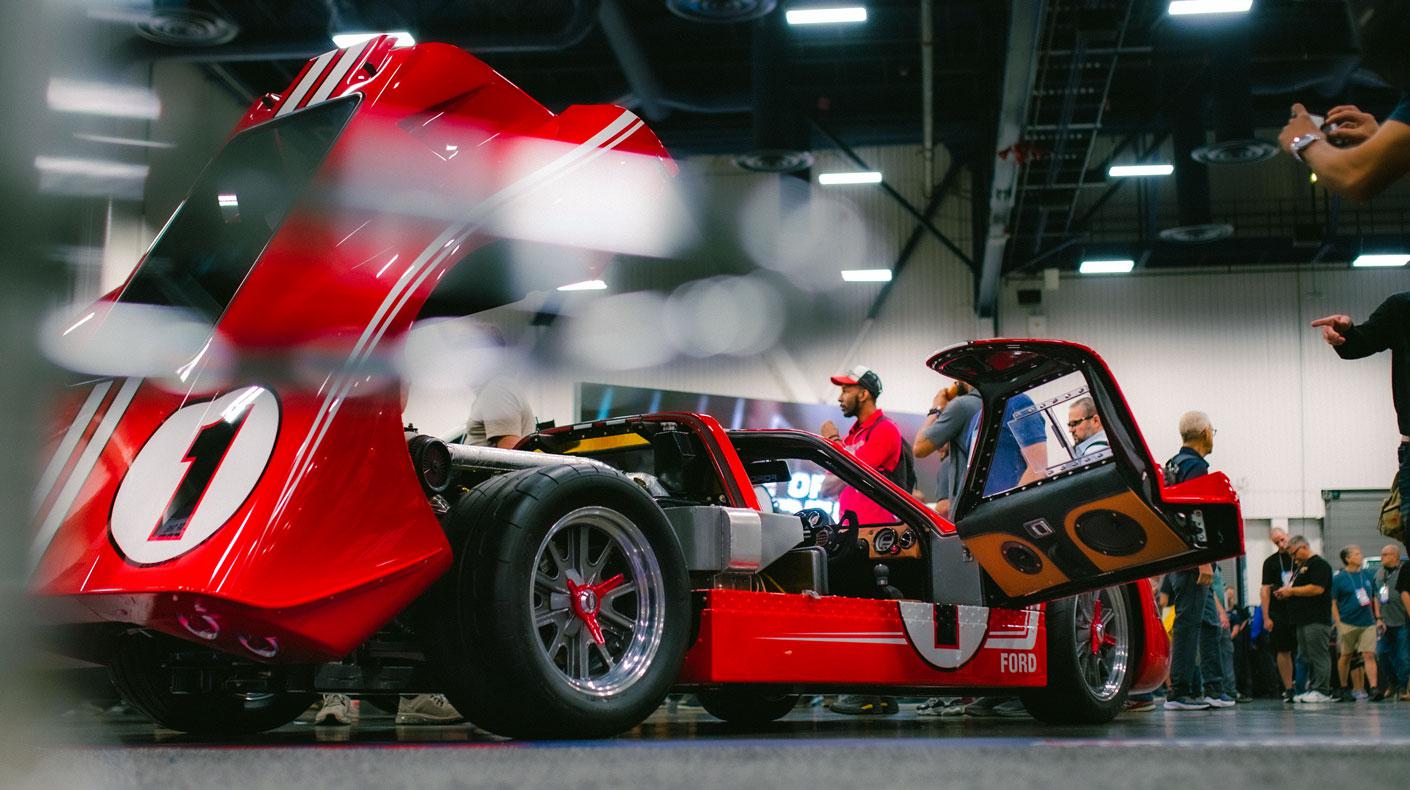SEMA News—December 2019
BUSINESS
What’s Trending for 2020
SEMA’s Council and Network Leaders Discuss the State of Their Respective Marketplaces
 Many of SEMA’s councils and networks are working with the association to expand outreach programs to bring youth into the automotive specialty-equipment industry. |
We spoke with SEMA’s council and network leaders to find out what initiatives they are working on, what’s currently trending in their markets and what they envision the future might hold, and also the challenges they face. Common themes include fighting government overreach, the continued growth of advanced driver assistance systems (ADAS) and expanding youth outreach programs.
 Tray Smith |
Automotive Restoration Market Organization (ARMO) Chair: Tray Smith, H&H Classic Parts
The restoration pie is not really growing; there’s stronger competition for everybody’s piece of the pie. The company that stays out in front with a cutting-edge website and digital marketing strategy is the one that’s going to get the best piece. Manufacturers and retailers must always look out for what’s next. In the hot-rod and restoration market, the square-body truck is the hot thing, so we’re all scrambling to get as much product out there for square bodies as possible. You’ve always got to be looking through a set of binoculars to determine what’s coming down the road.
ARMO sets five new objectives designed to help the market. We’ll look at how those objectives align with Board initiatives and within the ARMO mission statement and we’ll go from there. The big thing we just finished is our council outreach initiative where we went with both
HRIA and SEMA to educate high school counselors about what is available to them through SEMA. It’s all about establishing career paths and bringing the next generation into the automotive aftermarket industry.
For restoration, restomod customization is ruling the roost. Core restoration will always be there, but the restomod and custom car is at the forefront, and we see that reflected in product that we’re selling; more upgrades, more accessories, more conversion products.
One of the biggest challenges for our market is the internet sales tax that has hit us all since the South Dakota vs. Wayfair decision last year. It changed the landscape as far as what businesses must charge for sales tax, and we have to make sure we are compliant with the states that have already initiated the sales tax program and understand the cost to businesses. It’s a little bit scary, but at the same time, it is what it is.
Ian Lehn |
Emerging Trends & Technology Network (ETTN) Chair: Ian Lehn, BOOSTane
Vehicle electrification and autonomy will continue to be more prevalent in our industry. However, they shouldn’t be looked at as hurdles, but instead opportunities. These new technologies and trends toward autonomy are opportunities for our industry to look at new business. The other trend we will see is that the landscape of vehicle ownership will continue to evolve. When I turned 15½, the first thing I did was get my buddies to take me from class to the DMV to take my driving test and then I drove back to school. Back then, getting our licenses represented our freedom. We were the last generation who felt that way. Due to ridesharing, it’s no longer necessary to get your license to visit your buddies.
ETTN recognizes that much of the industry views these types of progressions as a hindrance, but I don’t think it needs to be looked at that way. There are many opportunities to capitalize on vehicle autonomy, electrification and internal combustion engine advancements. There are still plenty of youngsters who are into racing and vehicle modification. My daily driver wasn’t the vehicle that I was doing all of my modifications to; it was the car I was rebuilding in my dad’s garage. Those kids still exist; cars are still cool. Since I left my house this morning, I’ve gone in an Uber to the airport, taken a train to the train station and I’m currently on an electric scooter. This is a perfect representation of the way things are going. I don’t necessarily need a daily driver to go about my routine, but that doesn’t mean I don’t have a vehicle at home that I’m working on and buying parts for. Our industry is still alive and well among my generation and younger, but we look different. That shouldn’t be a scary thing; just be willing to adapt.
ETTN is working on a couple projects in their early stages. The first is a vehicle-sharing program, which is designed for businesses that are trying to innovate the next generation of products but need vehicles to be able to do that. For example, people are having a hard time getting their hands on the new C8 Corvette, and the ones who can are finding they’re pretty expensive. Why shouldn’t all companies try to innovate around that new platform? We are trying to offer a network of businesses that say “listen, I have a new C8 Corvette and you have a new Camaro LS1. Let’s trade. Do all the testing and measuring you need to do.” We are trying to be the online dating site for vehicle sharing. We will offer the platform to make the connection, but it’s up to you to set the date and decide where to eat.
The challenges we face today are the same ones the industry has always faced—the stigma that the industry is going to disappear because of new technology. ETTN as a network is always going to try to dispel that line of thinking. Technology shouldn’t be looked at as a roadblock, but instead a pitstop.
Jeffrey Major |
Hot Rod Industry Alliance (HRIA) Chair: Jeffrey Major, Bedwood and Parts LLC
As we are seeing with the rest of the aftermarket, pickup accessories also continue to drive growth in the hot-rod segment. For HRIA-member companies, the state sales tax nexus issue has moved front and center and has the potential to be the greatest challenge we have ever faced. Although there are various sources of information, SEMA’s Washington, D.C., office is compiling a state-by-state guideline to assist our member companies. Our members are also challenged with enforcing minimum advertised pricing (MAP) policies with their dealer network. As this can be a sensitive issue, we are researching the methods and enforcement ideas that have proven successful to share with our membership.
Rob Fisher |
Motorsports Parts Manufacturers Council (MPMC) Chair: Rob Fisher, E3 Spark Plugs
Many of our member companies are having a good year from a sales standpoint. There seems to be good competitor growth within certain motorsports segments. Just look at the factory stock supercar ranks in both NHRA and NMCA; they have had some solid fields this year. Outlaw drag racing is a perennial favorite. Fan interest is growing as well. I feel positive about the outlook for racing and manufacturers that make parts for race cars. If the economy keeps pace, we should have a good 2020.
We are working on several initiatives as a council, including developing a new “members only” program that will complement our annual Media Trade Conference (MTC). This will fortify our exclusive member benefits, making MPMC membership that much more valuable. We will also add a comprehensive section to the MPMC Business Guidelines Manual (free to all SEMA members) that will cover everything they need to know about remaining emissions compliant, including how to gain an EO from CARB. Finally, we will continue our push to attract new media organizations to attend the MTC. Last year we had 11 new media groups attend the event. Not only do we expect them to return, but we are also pushing for more new media to attend.
Across the board, technology is trending. Embracing digital technologies to help drive sales and connect with customers, automating manufacturing processes, updating facilities technology or simply trying to bring new technologies from other industries to motorsports are all areas where advancing technologies will make an impact. It’s up to us to embrace those technologies and make it a positive impact.
I think the tariffs are still an issue of concern. Regardless of whether or not you manufacture in China, the ongoing trade dispute does have the potential to slow the economy, which nobody wants. Barring that, government overreach is still a primary concern and always will be. The current administration has been more friendly to our industry, but one election can change all of that, so we have to remain vigilant in fighting for our rights.
Dino Perfetti |
Professional Restylers Organization (PRO) Chair: Dino Perfetti, Automotive Concepts/Champion Heated Seats
The restyling industry has as many challenges as opportunities. When marketing, selling and installing aftermarket products through new-car dealer franchises, OEMs view restylers as competitors when they are not.
Providing upgrades that consumers desire and deserve is ultimately the purpose of restyling. Not all car buyers want or need the platinum-edition trim level that puts them in financial hardship. The base-model Ford F-150 with added aftermarket leather is an excellent option for many buyers because it offers the luxury of a superior-feeling interior at an affordable price.
One of PRO’s new initiatives at this year’s SEMA Show will be the SEMA PRO Cup Challenge. This is an opportunity for restylers to build and display a vehicle on a dealership’s floor that appeals to many potential buyers while being both affordable and profitable to both the restyler and dealer franchise. The rules for this inaugural year are simple: do not exceed $12,500 MSRP for the package and build the vehicle within 20 labor hours. Sound simple enough? Hardly. The key to a successful build starts with the correct vehicle platform while allowing enough margin for a solid return on investment.
A finished product with a strong curb appeal and highly marketable branding will set apart the winner from the rest of the field. Judging also requires restylers to comply with seamless integration between OEM technology and the chosen aftermarket components. The four restylers selected for these vehicles to be displayed at the SEMA Show will set the stage for further competitions to expand on the anticipated success. The goal is for restylers throughout the country to reproduce these package designs.
Lana Chrisman |
SEMA Businesswomen’s Network (SBN) Chair: Lana Chrisman, McLeod Racing
I see our industry as anxious to keep up with the demand for automotive technology that matches the consumer’s way of life. Cars have always represented an extension of our lifestyle and personality. For our industry to remain relevant and for cars to hold their place, it’s going to take entrepreneurs with vision to accommodate the demands of today’s consumers. Automotive performance must go beyond torque and horsepower.
The SBN is working to rebrand itself as a network that we feel will impact both women and men in our industry. The major initiatives we are focusing on this year include career development, industry best practices, mentoring programs and women-owned business programs.
As we have seen in other industries, the women’s movement has been much publicized. SBN has been monitoring this trend and feels confident that the programs we are initiating will provide value to SEMA-member employees and companies. Our career development program will provide resources and skill development for both women and men of all experience levels. The industry best-practices program is still a work in progress, but we hope this program will provide affordable benefits that will make SEMA-member companies more competitive in the job market.
 Erika Marquez |
Truck & Off-Road Alliance (TORA) Chair: Erika Marquez, Warn Industries Inc.
Our industry continues to grow and there is more expected for next year. According to the “2019 SEMA Industry Perspectives” report, 73% of businesses expect their company’s sales to grow over the next year. It is great to hear that consumer sentiment toward the United States’ economy is positive. In our market segment, we see more of the traditional light-truck accessories retailers diversifying into off-road markets. The pickup segment accounts for the biggest slice of consumer dollars spent on specialty parts with a 29% share, according to
the report.
We just recently finished our long-range plans for our fiscal year 2020, and we hope to recruit new off-road members who are looking for a home within the SEMA community. Ensuring our current light-truck members continue to feel part of our council is a priority, and we have created task forces to preserve and improve the value we offer to our members. A vehicle technology and education subcommittee has also been created to offer the latest vehicle trends and new safety performance technology. Other task forces include regional networking events/community building and communications/social media, which were created to promote all of our networking events and communicate important information to our membership via social media and monthly email updates.
In terms of vehicle sales, the light-truck market continues to grow. However, the consumer demographic is switching as more millennials are purchasing vehicles. Although pickups and SUVs are still experiencing strong sales, CUVs are projected to drive the majority of growth in the light-truck market over the next five years, according to the “SEMA Future Trends Report,” with 69% market share by 2025. Younger generations are looking for style and off-road capabilities without sacrificing performance and fuel efficiency. There is a need for more aftermarket products and accessories to upfit the huge number of CUVs projected to be on the road.
The trade war between the United States and China poses a challenge for our industry. American-made manufacturers that source products impacted by increased tariffs are having to pass some of those increases on to the consumer, and in the long run, this is going to affect the economy and slow consumer spending. Corporate strategies to mitigate this situation cause disruptions in supply chains, and that makes planning difficult. Secondly, customizing and modifying vehicles with factory-installed ADAS technology is something we need to address since these systems are becoming standard equipment on every new light truck produced. SEMA is already working on understanding this technology and helping member companies understand how their businesses will be impacted by it.
Tyson Boyer |
Wheel & Tire Council (WTC)Chair: Tyson Boyer, Dill Air Controls Products LLC
The wheel and tire marketplace continues to face challenges as we near the end of 2019. Some of these challenges can be attributed to the slowed growth in new-car sales, major mergers and acquisitions over the last few years, variable raw materials costs and global economic and trade uncertainties, most notably the continued increases in tariffs. These are causing manufacturers in our space to redefine company goals and in some cases to put a hold on their aggressive expansion plans. This means you cannot sit still because the change-opportunity time is ripe. If you are an independent business owner or shop manager, take action! Look at this two dimensionally—internal versus external.
On the internal side, collectively brainstorm for new sales techniques, transform your B2C product offerings, engage in alternative training, dissect your technology in-house and on the e-commerce side, as well as your team’s aptitude in order to constantly deliver beyond the customer’s expectations. Externally, creatively review your current business model and update your customer value propositions to adapt to the rapidly changing digital space. Analyze your partnerships and sourcing strategies. Trust your gut and do not hold back on taking the calculated risk move.
The Wheel & Tire Council is actively working on modernized resources that will provide our segment with education and service practices to better understand and qualify the newest technology in vehicles that you may see today. This includes highlighting the more common in-bay challenges with suggested ways to achieve greater results.
Kirstin Stone |
Young Executives Network (YEN) Chair: Kirstin Stone, Derive Systems
The most recent generational shift has really changed the landscape for hiring and retaining employees in the industry. Millennials, who make up the vast majority of the YEN membership at this point, also make up about 50% of the workforce. Too often, we hear about millennials being job-hopping flakes who seek oddball perks, such as nap rooms and ping pong tables. The reality is, though, that this hasn’t played out in the real world.
One of the greatest driving forces for our generation when it comes to choosing an employer is finding purpose in our work, and that’s great news for the aftermarket. Most people in this industry were enthusiasts before their time in the workforce started, so the purpose is built in. The SEMA YEN is dedicated to helping this passionate, driven bunch of young professionals develop their passion for the automotive aftermarket into sustainable, long-term career choices.
As a network, YEN is focused on connecting young professionals in ways that can enhance their careers and grow their industry involvement in the long run. We know that it will ultimately benefit not only the individuals, but also the companies that employ them. This year, that means growing and expanding the Lunch and Learn program and offering new opportunities for networking with likeminded professionals. We’ll also increase our presence and availability on social media, with the ultimate goal of bridging into real-life communication when we can, which has never been more possible than it is now.






